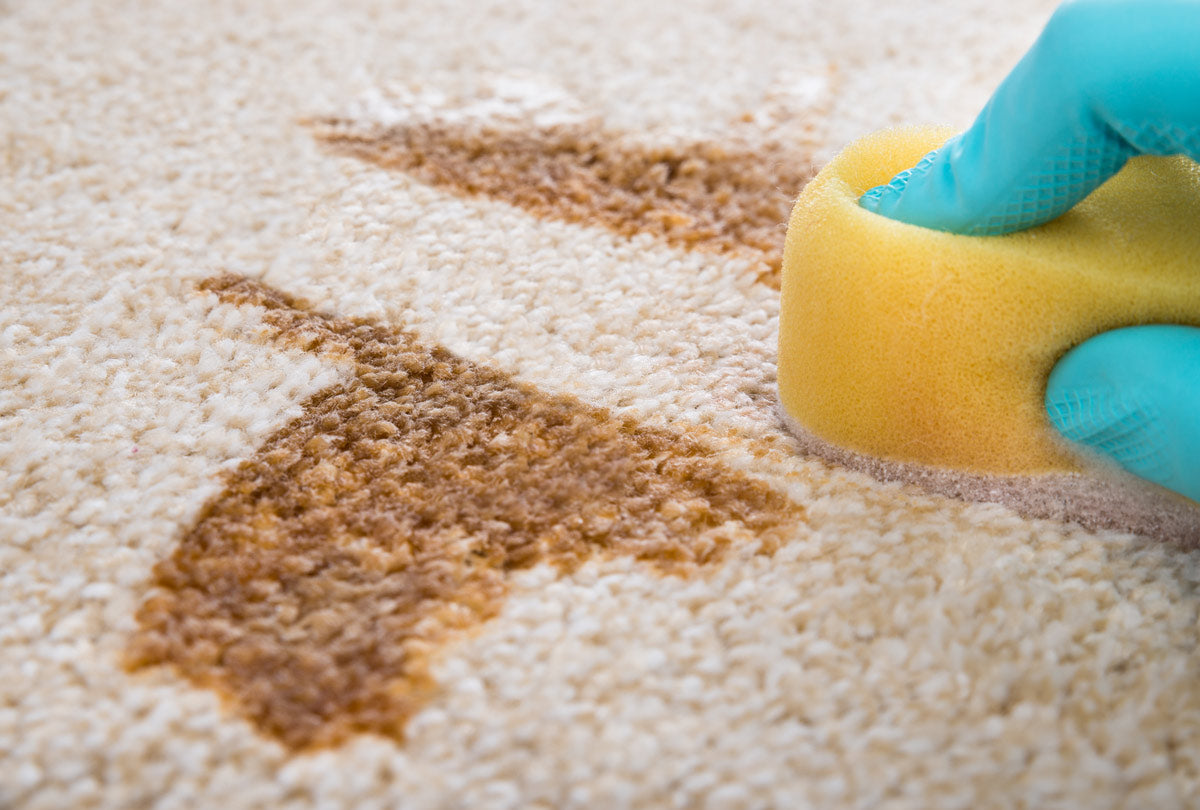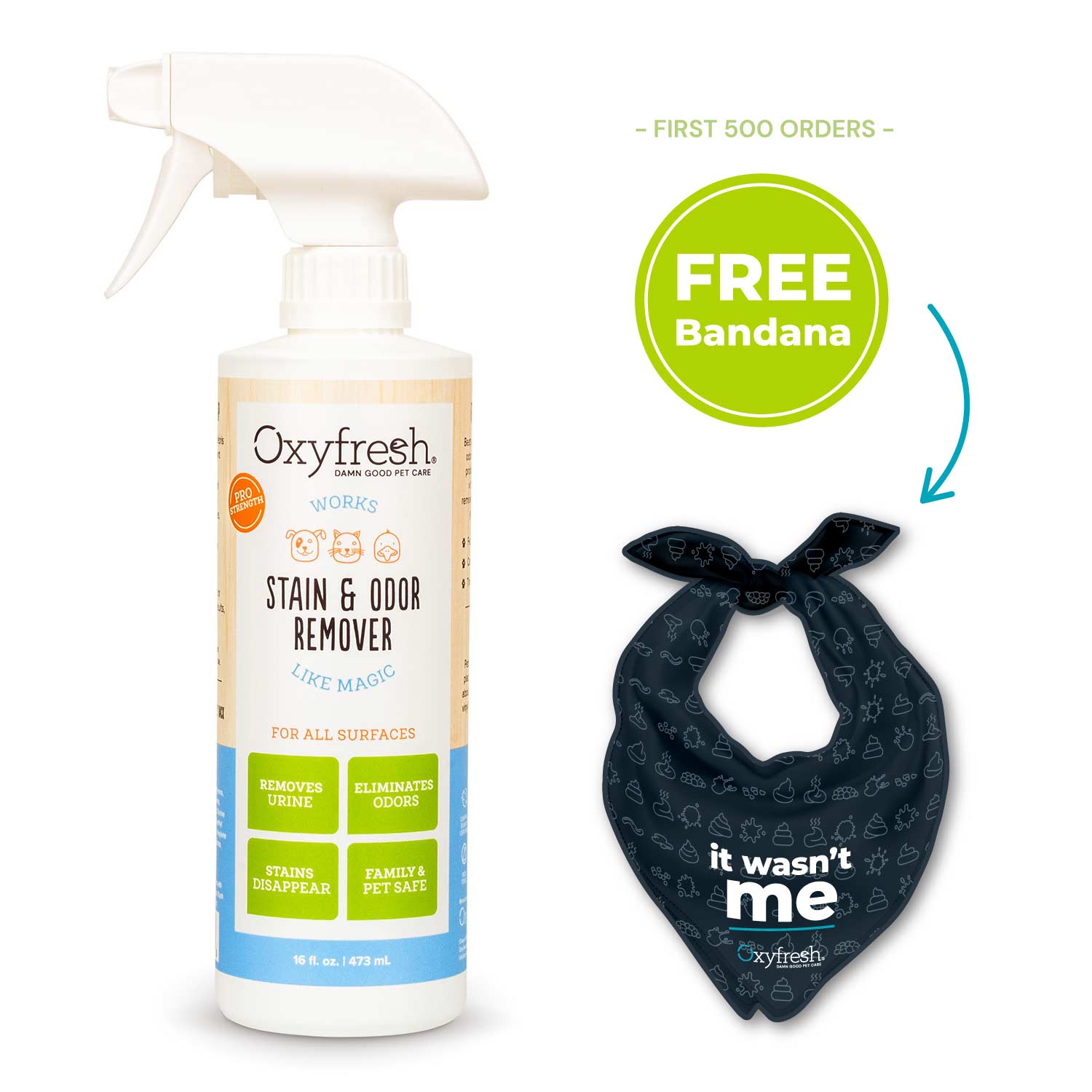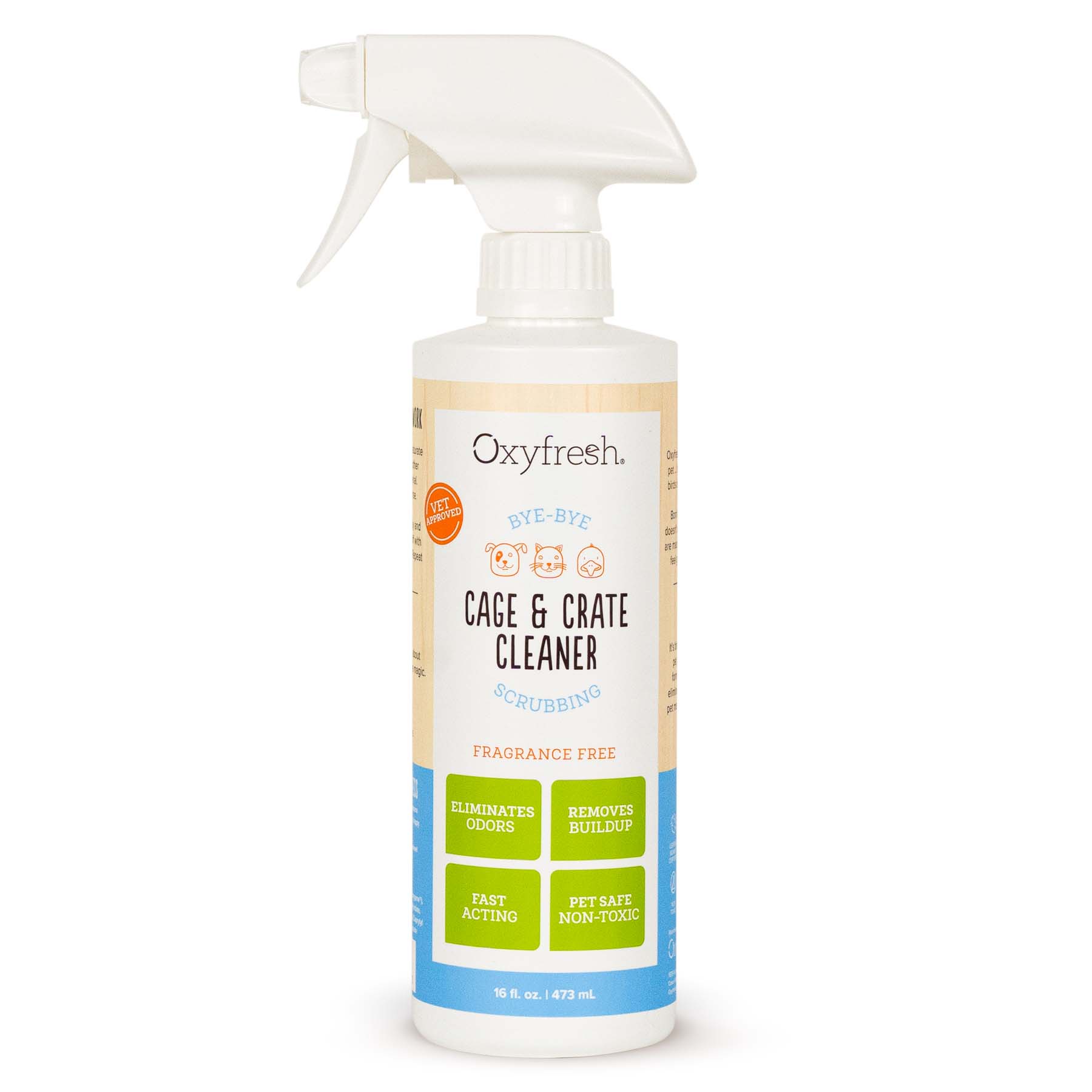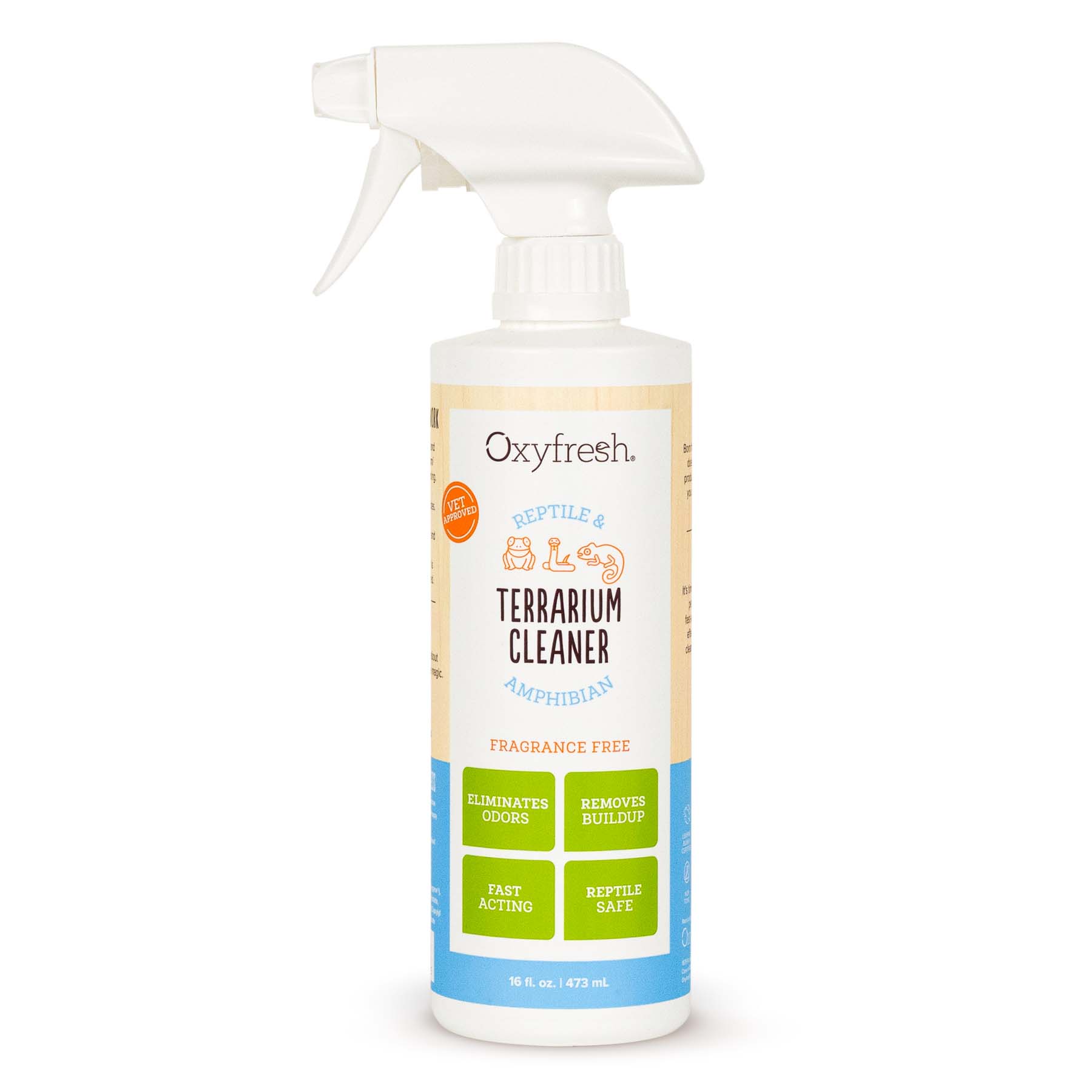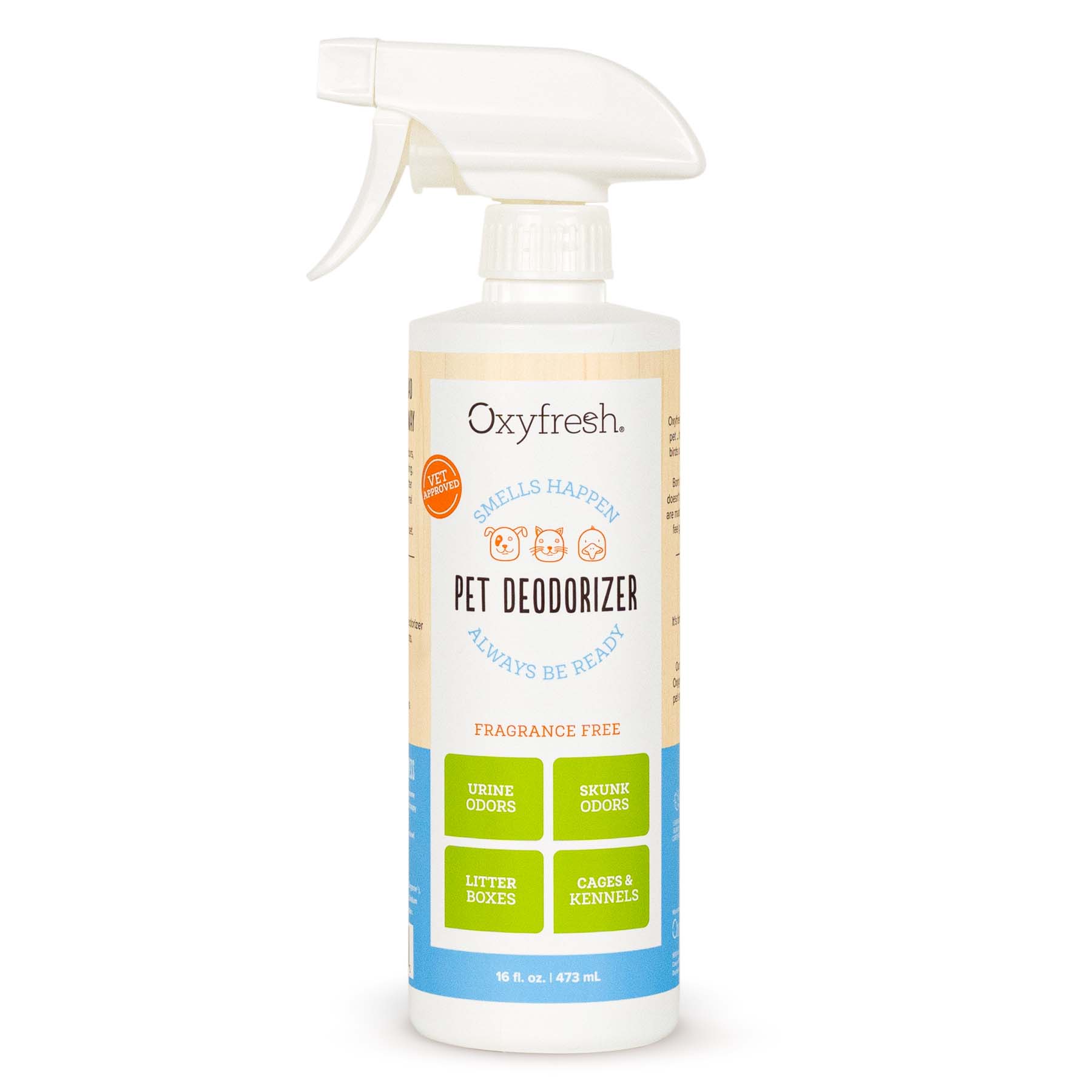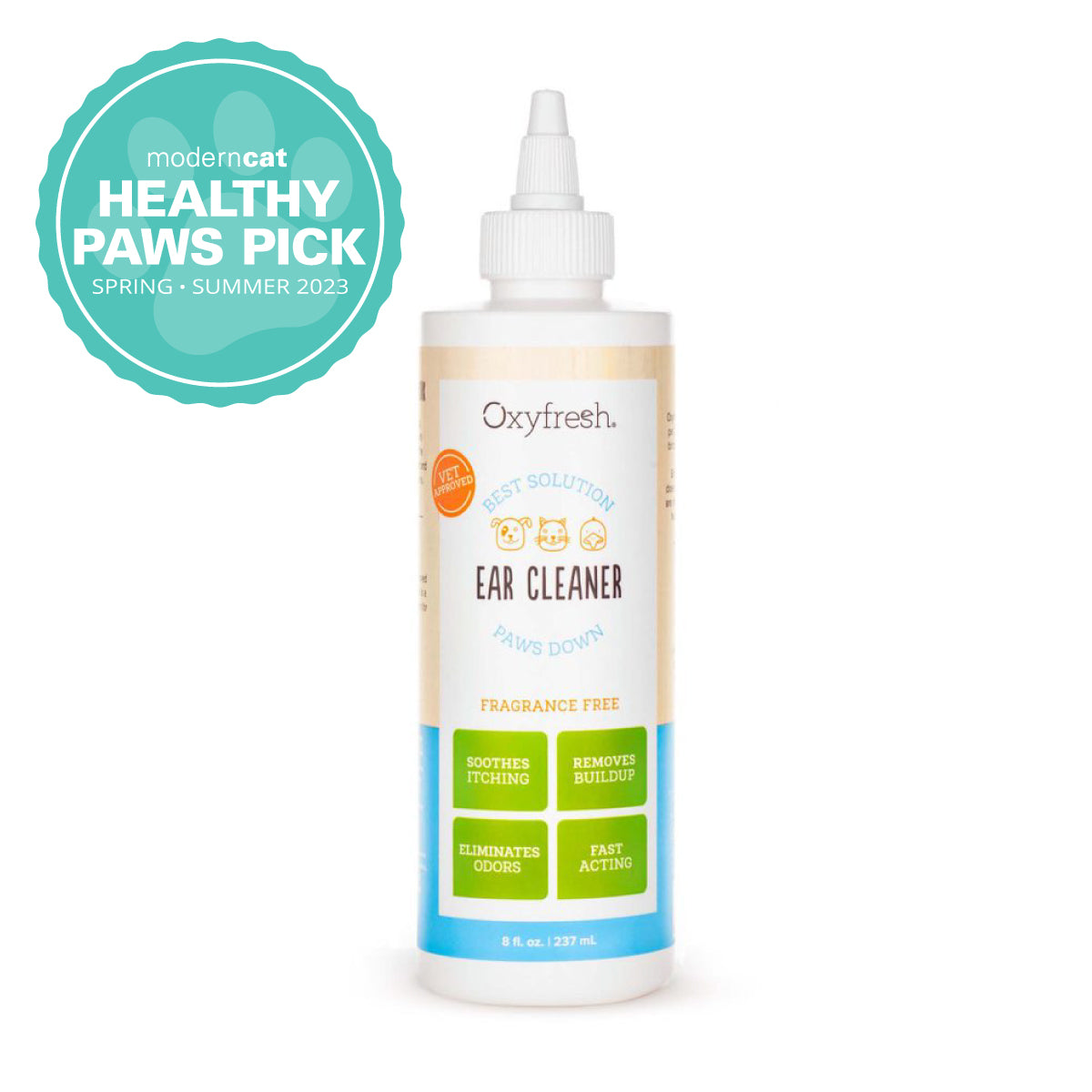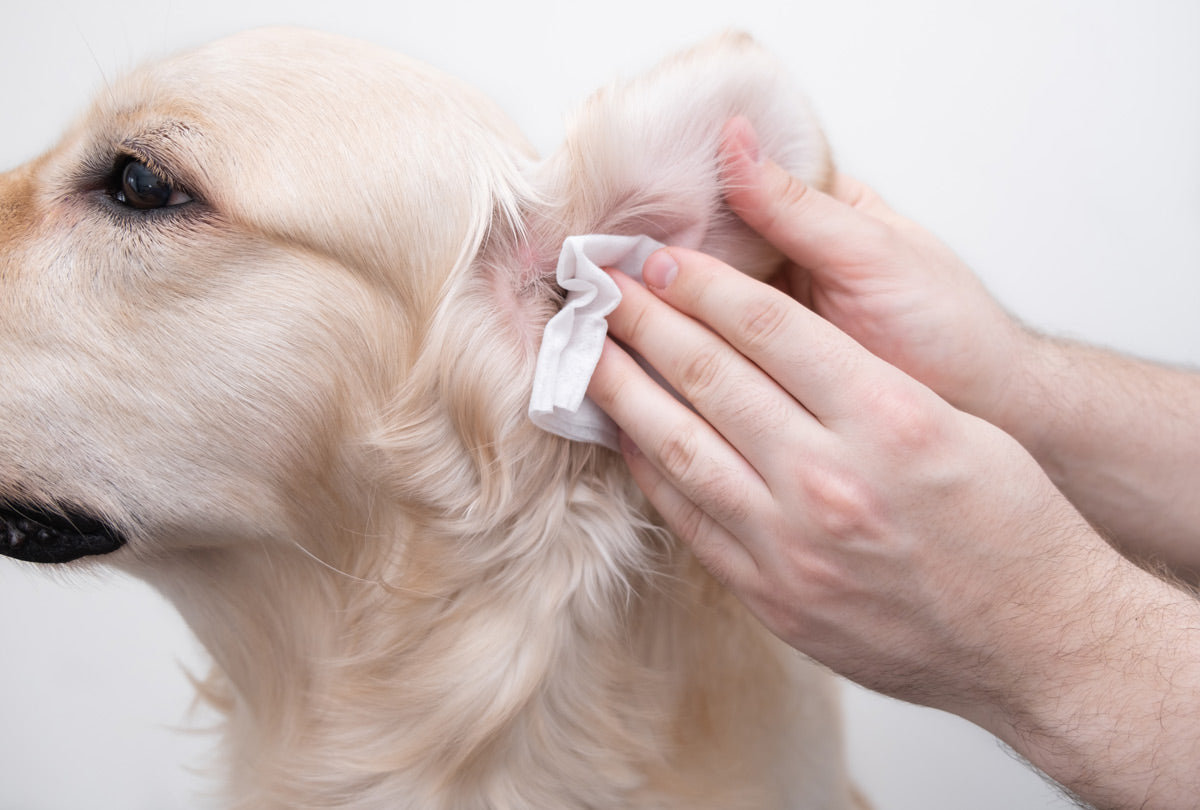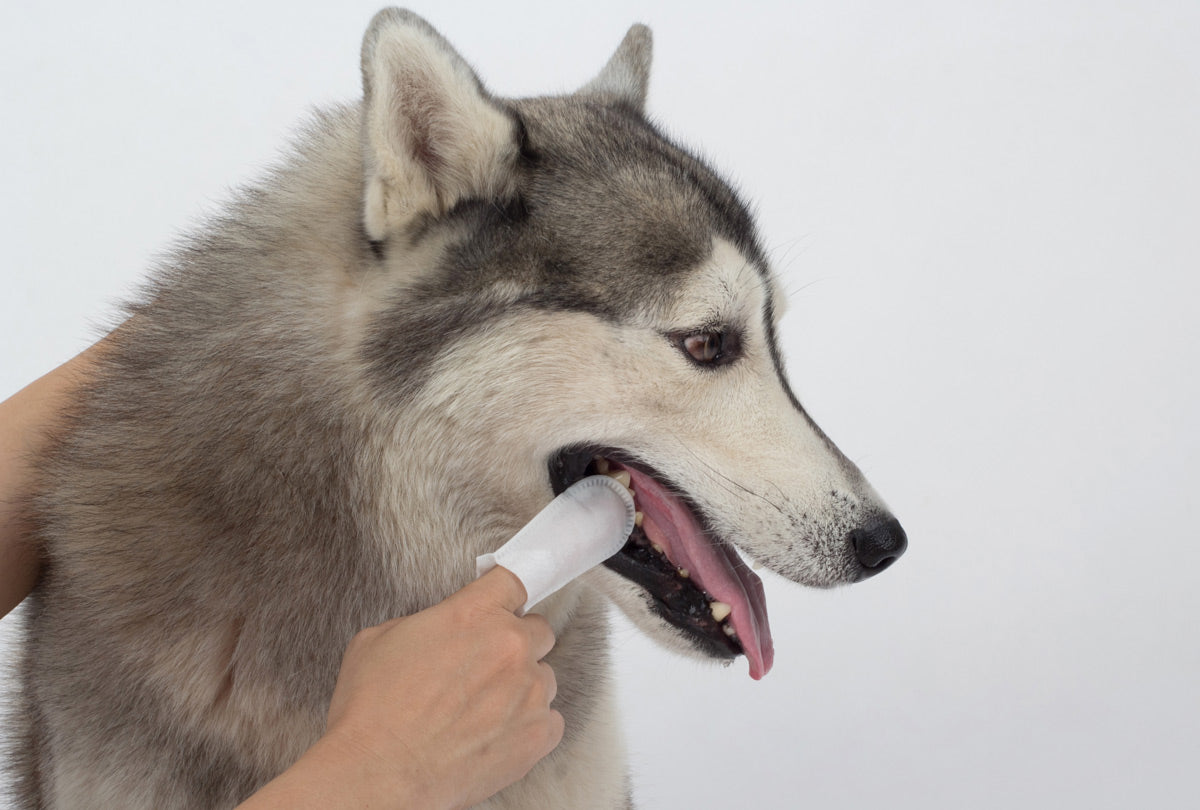As a pet parent, life is full of surprises ... surprises left on the carpet, that is! From dog urine to yellow vomit stains, removing pet stains is only half the battle. What about those gross odors left behind?!
Keep reading as we explore the best pet stain remover options, from enzyme cleaners to natural stain removers and (spoiler alert!) a groundbreaking NEW stain remover taking the pet world by storm!
Should You Use Enzyme Cleaner for Dog Urine & Cat Pee?
Urine is, paws down, one of the most frustrating types of stains and odors to deal with as a pet parent. Traditionally, using an enzyme cleaner for dog urine and cat pee has been dubbed the best way to solve the problem. Why? Enzyme cleaners have enzymes called uricase, which break down uric acid in cat and dog urine.
Uric acid is responsible for the strong, lingering odors associated with pet urine. Most traditional cleaning methods can’t fully dissolve uric acid, which is why pets peeing repeatedly in the same spot is an ongoing problem for many pet parents. Enzyme cleaners break down uric acid into carbon dioxide and water, eliminating the odor when you clean up the stain, either by wiping/blotting it away or vacuuming the area.
Enzyme cleaners for dog urine are eco-friendly than chemical cleaners, but you still need to look at all the ingredients. Just because a product is an enzyme cleaner doesn’t mean it’s automatically a safe choice.
Cons of enzyme cleaners for pet stains
- Tacky or greasy residue left behind on carpets: It may not be obvious when the stained area is doused with enzyme cleaner, but after a few days, you may think, Hmm, why do my carpets look so dirty? Oily residue left behind by enzyme cleaners can be a magnet for dirt, grime, and oils from bare feet and your pet’s coat. This can ironically make the area of the stain conspicuous.
- Can damage certain fabrics: If you get a pet stain on clothing or blankets, be aware that enzyme cleaners can damage fabrics like wool and silk, leading to holes, weakened material, or misshapen fabric.
- Many enzyme cleaners have fragrances: What’s wrong with a little oceanside breeze scent, you may ask? Fragrances get their smelling power from chemicals, many considered carcinogenic (toxic). But because the fragrance industry is self-regulated and fragrance formulas are considered a trade secret, most people aren’t aware of the dangers. Fragrances are linked to allergy symptoms, migraines, respiratory issues, reproductive problems and more. Breaking up with fragrances (aka parfum) in your home, from cleaners to toxic deodorizers – can be one of the best things you do for your pack members. To learn more, read why smelling good could come at a cost to health.
Natural Stain Removers for Pet Stains
Vinegar
Distilled white vinegar reigns supreme in the natural stain remover category. It works especially well on pet urine stains, vomit, as well as blood stains ... you know, in case you have an oops moment clipping your pup’s toenails.
Not only will vinegar remove the stain, but it will also tackle the ammonia smell of pet pee, breaking down the bacteria causing the odor. Here’s the catch, though: you need to be patient! Unlike fast-acting oxidizing cleaners for dog urine and cat pee, neutralizing the smell of pet urine with vinegar is a gradual process, taking up to 24 hours.
If you hate the smell of vinegar, or if patience is not one of your strong suits, you may want to skip this natural stain remover. But if you’re a diligent DIYer who likes eco-friendly options, vinegar is a valid choice. Ahem, just make sure it’s white vinegar; balsamic vinegar and apple cider vinegar can stain surfaces.
Here's our favorite natural stain remover recipe with vinegar:
- Mix one part vinegar to two parts lukewarm water in a large bowl or spray bottle. (If you go full-on vinegar without diluting with water, you could damage your carpets or upholstery.) If you have a dye-free dish soap, you can add a small squirt to the solution as well to help clean the stain, but if you don’t have it, no sweat. Just vinegar and water will do.
- Liberally spray the stained area with your mixture (or apply with a cloth), then let the vinegar solution sit for 5 minutes. Then blot with a cloth (step on it to apply extra soaking power). You’ll need more than one cloth for the job! You may need to repeat the application and blotting process several times. Ultimately, you’ll want the cloth to be completely free of the stain.
- Once the stain is removed, apply a layer of baking soda to the area and let it sit on the carpet for 24 hours before vacuuming away. (Don’t use those powdered carpet cleaners ... they’re usually chock full of fragrances.)
Salt
The coarse texture of salt naturally makes it an effective material to scrub away dirt and stains on carpet. Salt can be used solo on stains, sprinkled generously onto the spot, then brushed away with a stiff-bristled brush, followed by a run of the vacuum.
However, the type of stain matters. Salt is best used on stains like red wine, coffee and tea, grease, food, or mud tracked in after a walk. Salt should not be used on pet urine, as it can lighten the area of the stain and cause damage to delicate or expensive carpet fibers if it isn’t thoroughly removed.
Hydrogen Peroxide
Hydrogen peroxide is ideal for treating both protein- and plant-based stains, as it has antibacterial properties and can break down organic compounds. It’s also eco-friendly, inexpensive and safe for most surfaces.
However, hydrogen peroxide is best on NEW pet stains. If you’re treating an OLD pet stain, hydrogen peroxide could cause discoloration to your carpets. How can you tell if hydrogen peroxide will discolor your carpet stains? Put some peroxide on a cotton swab and then swab your floor. If no color transfers, you should be good to go.
Hydrogen peroxide, in tandem with the deodorizing power of baking soda, is a win for treating pet stains and their odors naturally.
How to use hydrogen peroxide for stains
- Cover the stain with a cloth (we like to fold the cloth in half) and stand/walk across the cloth wearing shoes to soak up any excess liquid. (If it’s a vomit stain with chunks, remove those first with a paper towel.)
- Sprinkle baking soda over the stain after you’ve soaked up the liquid.
- Mix ½ cup of 3% hydrogen peroxide with 1 teaspoon of dye-free, scent-free liquid dish soap. Carefully pour the solution over the stain and baking soda. Work it into the carpet fibers with a scrub-brush or cloth. Leave it for 10 minutes and then blot up the liquid.
- Once the area is completely dry, vacuum thoroughly. If it’s a doozy of a pet stain, be prepared to repeat the above steps.
Cons of hydrogen peroxide for stains
- It’s light sensitive: Don’t make a batch of hydrogen peroxide stain remover and transfer it to a light-colored bottle or it will lose its cleaning and stain-removing power. You’ll need a dark bottle to house it.
- It has a short shelf life: Has your bottle of hydrogen peroxide been sitting on your shelf since hammer pants were cool? Hydrogen peroxide only has a shelf life of three years if it’s sealed, and it’s only effective up to six months after it’s opened. To test if your hydrogen peroxide is still effective, pour some down the sink and look to see if it bubbles or fizzes. If it doesn’t, it’s time to get a new bottle.
- Dangerous when mixed with vinegar: Don’t adopt the attitude of: if one natural ingredient is good, two is even better. If you mix hydrogen peroxide with vinegar in the same bottle, it forms peracetic acid (dangerous) and the mixture becomes a corrosive acid, which can harm your skin, eyes, throat, nose and lungs. Important: this is different than if you use vinegar on a surface and blot it away, and then use hydrogen peroxide on the stain. The chemical reaction in a closed container is different than the reaction from open air.
The bottom line on natural stain removers
Removing pet stains can be as easy as a trip to the pantry, but compared to commercial pet stain removers, it can take several applications and/or a longer time to treat the stain and especially the odors. You’ll also want to properly dilute the ingredients you’re using to avoid making the stained area worse.
5 Tips for Removing Pet Stains
- Buy a bulk-size package of white cloths at a big-box retailer. Yes, you will use them, and you’ll be thankful when it’s time to clean up pet stains.
- Treat the area 1.5 times the stain, as liquid travels down and outward. Treat the stain as early as possible for best results.
- Don’t vigorously rub stains. This works the stain deeper into the carpet. Pat the stain instead.
- When You’re in the cover-with-a-cloth stage of stain removal, put a heavy book on top to weigh it down, as this will help wick up extra moisture. If you don’t have an encyclopedia circa 1976, stand on the stain instead. You really will be amazed at how much more liquid you soak up.
- Cover the treated area with an upside-down laundry basket to keep pets and people from walking through it. No one wants wet socks or baking soda tracked throughout the house.
What to Know About Using Chlorine Dioxide as a Pet Stain Remover
Don’t let the word chlorine freak you out. Chlorine dioxide, a powerful oxidizing agent, is molecularly different than chlorine used in swimming pools. In fact, it’s been used to disinfect and purify drinking water since the seventies, as it eliminates bacteria and odors on contact via the gentle process of oxidation. (If you were known to sleep like a dog in science class, oxidation means it steals electrons in a chemical reaction.)
So what does this mean for your carpets? When chlorine dioxide makes contact with the bacteria and odor molecules in pet stains, whether it’s vomit, cat urine or other ick, it works directly at the source to break odor bonds and bacteria, rendering them inactive and disinfecting the stained area like a champ. Best of all, it does this quickly – mere minutes, making it faster than enzyme cleaners. Because chlorine dioxide is non-toxic, it’s safe to use around people and pets, bringing peace of mind.
Cons of chlorine dioxide pet stain removers
The biggest con? You’re gonna kick yourself for not discovering them sooner! But seriously, like any product, the rest of the ingredients matter. You don’t want to select a product that has fragrances (toxic) or dyes that can stain your carpet. Look at those labels carefully!
How to Use a Chlorine Dioxide Pet Stain Remover
- Open sprayer tip and completely spray area to be cleaned. Immediately remove solid residue from area and blot up excess moisture.
- Remove as much of the stain or pet stain as possible using a highly absorbent towel.
- Apply a liberal amount of cleaner to affected area. (For odors of epic proportions, you want total saturation). Let stand 5–10 minutes, then blot with a towel and let air dry.
- Once dried, vacuum and inspect. Repeat if necessary. For best results, treat stains promptly.
Meet the Ultimate Chlorine Dioxide Pet Stain Remover: Oxyfresh Stain & Odor Remover
Pet parents, it’s time to get excited about your carpets and couches again! Introducing Oxyfresh Stain & Odor Remover, a genius NEW chlorine dioxide pet stain remover proven by independent third-party testing to outperform enzyme cleaners and hydrogen peroxide cleaners at both removing stains like pet urine and vomit AND neutralizing the offending odors. Best of all, no chemical fragrances or weird residue left behind, keeping your carpets and furniture looking (and smelling) like new.
Just like natural stain removers, it’s non-toxic. But rather than needing several applications, it’s a one and done. (We’ve all got better things to do than clean up pet stains.)
Unlike pet stain removers that burn your lungs or add to the stink with chemicals or overpowering fragrances (dog vomit mixed with floral notes = eww), Oxyfresh Stain & Odor Remover is 100% fragrance free with no harsh chemicals.
It works like magic on tough pet stains and odors, thanks to the proprietary, non-toxic odor-neutralizing ingredient Oxygene® (blend of chlorine dioxide), which uses the natural power of oxidation to break down the cellular structure of odors, rendering them completely gone. This will help prevent dogs and cats from re-marking the same spot. No other pet stain remover has this brilliant ingredient!
Combined with Fresh Air® technology, you have a dynamic duo to tackle even the most stubborn stains and odors, every time, on every surface, from carpets to upholstery to hardwood flooring.
Proven highly effective, with the prestigious Seal of Approval from The Carpet and Rug Institute, try Oxyfresh Stain & Odor Remover and put YOUR pet’s mess to the test!

